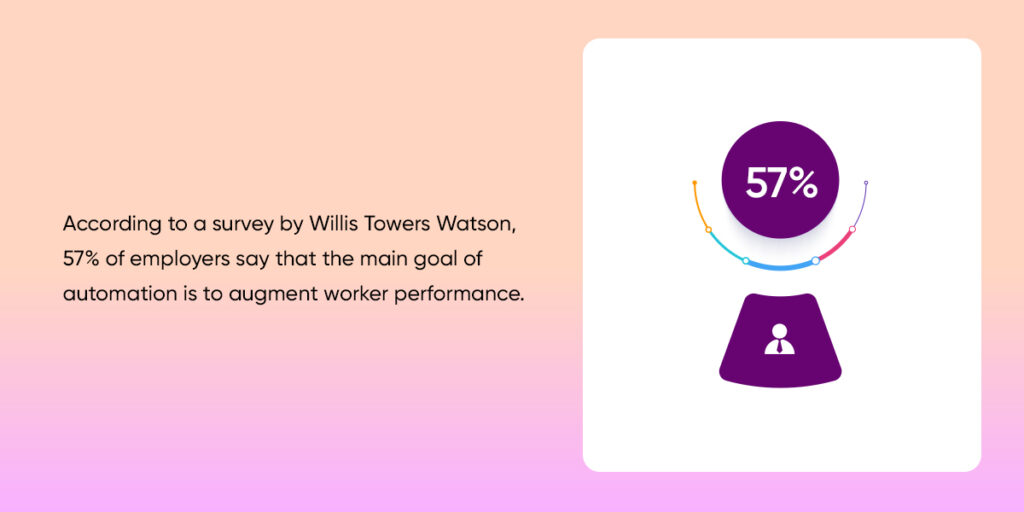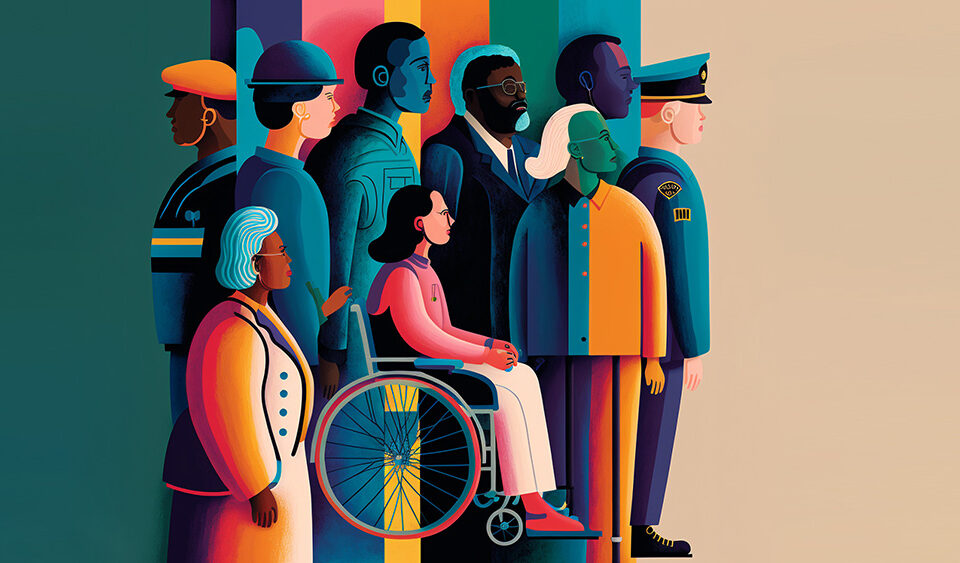
Change is a constant in our world. In our quest for excellence in how we live as humans, we continue to push boundaries of innovation and creativity; developing new ways to optimize repetitive and mundane activities that otherwise take a considerable amount of our time.
Every human invention has always been met with profound hostility. In the 18th century, when textile machines were invented, textile workers protested and burnt down textile (loom) machines in anger and protest because they felt the machine would put them out of jobs.
Resistance to change is a normal process that’s old as time itself. It is true today as it was in the 1st to 3rd industrial revolution. We currently exist in the fourth industrial revolution and the world has never experienced this much innovation in a relatively short span of 20-30 years.
What is workplace automation?
Workplace automation is the process of instructing software and/or hardware with network connections to create automated workflows. Press one button, and multiple actions follow. It’s a bit like playing a game of digital dominos.
It’s often applied to repetitive tasks that would otherwise require multiple manual actions. A workplace example of this is an onboarding flow; HR needs to only enter a new joiner’s name within an automated system to trigger actions like having all onboarding documents emailed and meetings scheduled.
Automation and Diversity
One of the main benefits of Automation in the workplace is that it can help to remove barriers that makes diversity impossible. Beyond automating repetitive tasks and streamlining processes, it can also help remove underlying biases and create a level playing field for all persons.
Automation in the workplace can provide new opportunities and remove barriers that have traditionally made it difficult for people with disabilities to find and maintain employment. For Instance, AI-powered robots and drones can be used to perform tasks that are difficult or impossible for people with physical disabilities to perform, such as reaching high shelves or traversing uneven terrain.
On the gender spectrum, automation and AI will bring opportunities to both men and women.
According to an Article in Harvard Business Review, technology can break down many of the barriers facing women, opening up new economic opportunities, helping them to participate in the workforce, and, in the automation age, enabling the navigation of transitions.

Why employees may resist Workplace Automation.
1. Shock and fear of the unknown
Employees resist change because of shock and fear of the unknown. Employees might react to organizational change in a variety of ways, from dread and terror to enthusiastic support. Some employees may feel compelled to cling to the past during periods of transition since it was a more stable and predictable time. If what they did previously worked well for them, they may be hesitant to change their behaviour for fear of not achieving as much in the future. The less the company understands about the shift and how it will affect them, the more terrified they will become
2. Fear of Job Loss
Employees fight change in the workplace for a variety of reasons, one of which is job loss. Any process, innovation, system, or product change in an organizational setting will include streamlining, working smarter, cost reduction, efficiency, and shorter turnaround times. All of this indicates that employees and managers will fight changes that result in the elimination or reduction of their jobs.
Your change, in their opinion, is detrimental to their career within the company! A part of employees’ reactions during times of transition are determined by their job satisfaction. The more satisfied an employee the more open they are to change. The less satisfied they are the more opposed they are to change; it’s just another annoyance to them.
3. Loss of Control
One of the most common reasons for employee resistance to change is a sense of loss of control. Employees gain a sense of control over their work environment when they are familiar with their routines. Employees may feel powerless and befuddled when they are asked to modify how they function. When people believe they have some control over the situation, they are more likely to grasp and make adjustments.
How to Manage Employee’s Resistance to Workplace Automation.
A company is only as successful as its people, processes and culture. Ensuring that automation fits into this trinity is a job for HR teams and leaders. It can be done in the following ways;
1. Communicate Needs
First, understand that employees demonstrate different levels of ability and willingness to adapt to new changes. Hence it is advisable to consider onboarding a new automation process or system from a multi-generational perspective.
Communicate your plans and expectations when bringing in new technologies. Employees may see workplace automation and assume they’ll no longer be needed in the organization. Employees can better adjust to new changes when HR communicates openly. As an HR professional, consider how automation may shift the demand for employee skills and take time to communicate those potential changes and their advantages to employees. Meet your employees where they are, not where you want them to be.
2. Engage Your Employees
Communication isn’t enough to ensure a smooth transition to new technologies. It’s also essential that you involve your employees in the transformation process. Various researchers proved that changes become much more manageable when employees play an active role in the process.
Make space for expressing their opinions or concerns and, of course, answer their questions.
Give them a sense of power, and once they feel heard and respected, they won’t resist the change anymore. Moreover, employee feedback can give you essential information that will provide you with a better idea of the reasons behind the resistance to change. You can then adjust your efforts to minimize the resistance further.
3. Secure the buy-in of office influencers
Every organisation have key influencers who can encourage their colleagues. It’s important to note these people and work with them to adopt the new automation. Gather together inspirational leaders and influencers from every department to build a team of Change Champions. These respected team members can help make the changes feel more manageable and less threatening.
4. Provide Training
When implementing new systems or tools, organizations need to consider onboarding processes from a multi-generational perspective.
If the rise of automation in the workplace will demand new skills, you can counter that by offering development opportunities to help employees fill the skills gap. Emphasize the benefits of these changes by offering training tools that leverage the strengths of individuals within your workforce.
If facilitating new training seems overwhelming, consider the possibility of automating the training programs as well. This allows your employee’s first-hand exposure to this automation.
Automation can augment, rather than replace employees
Technology doesn’t have to replace employees; it can be used to enhance their work and output. In fact, 57% of employers say that the main goal of automation is to augment worker performance, according to a survey by Willis Towers Watson.
By automating away from busy work and investing in employee development, companies can enjoy higher productivity, higher morale, and an improved employer brand that will make it easier to attract and retain top talent.


